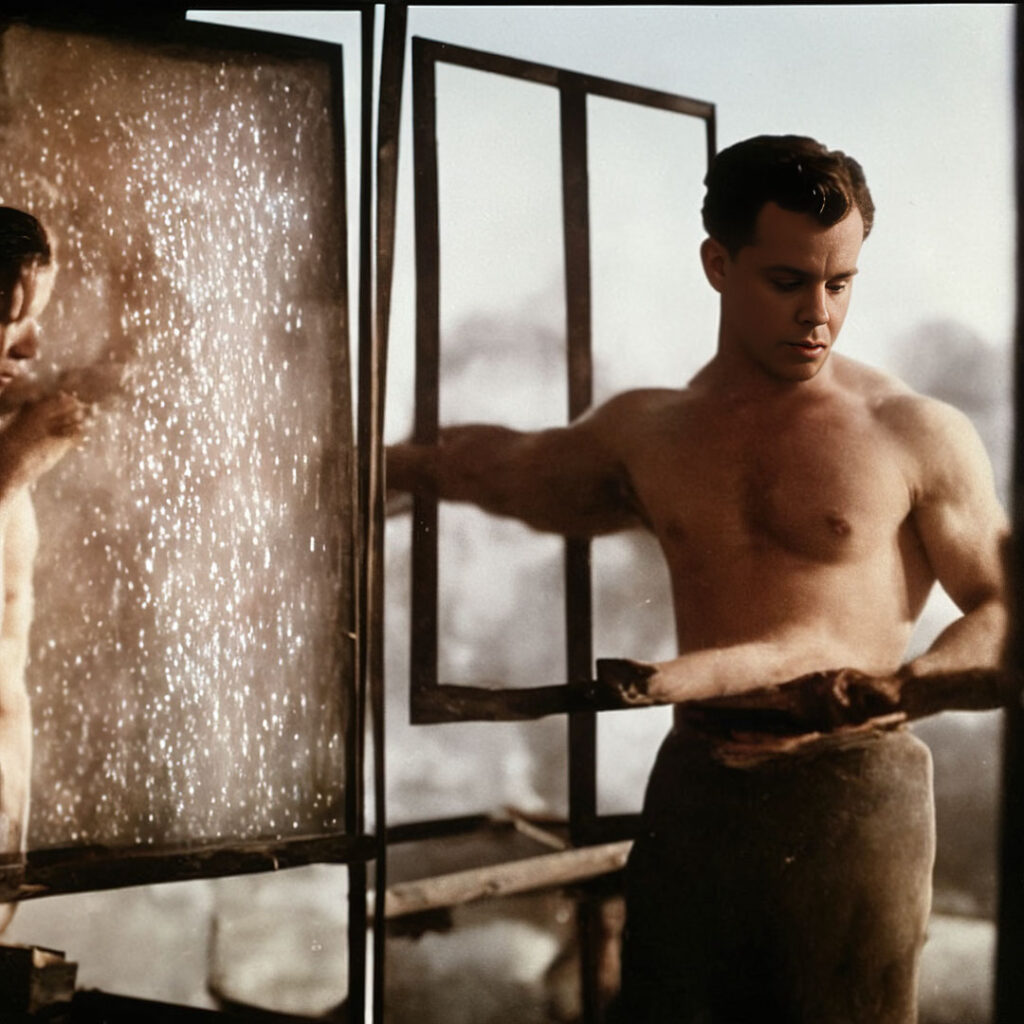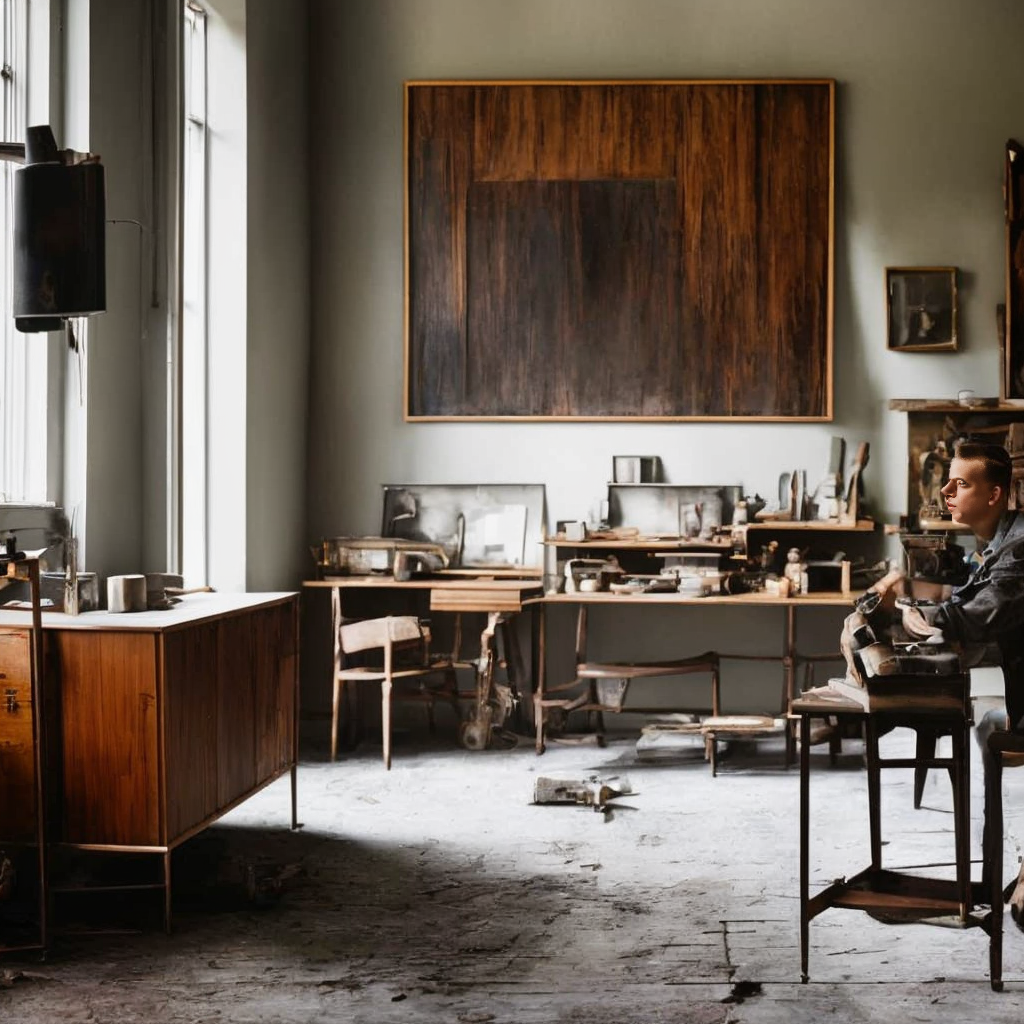Sur l’automatisation du style visuel et son remplacement / On visual style automation and replacement

Some people worry about the replacement of artistic know-how and the replacement of the original signature and style by the machine. Worse still, it would be the extraction of artistic images feeding deep learning that would allow this disappearance and this definitive subtlety, theft for example, which recopies ad infinitum what has been stolen, reiterating the theft by mimicry.
If one can question this recourse to the argument of the originality of the style, so much it was questioned by artists in the XXth from Duchamp to Marcel Broodthaers for example who had dissolved the romanticism of the artistic expression in a neutral aesthetic, we have to recognize that when we speak about art and AI we often mix modern and contemporary experimental practices that have long since gone beyond the question of style and artisanal, creative, neo-classical practices that are haunted by this question because they have kept it untouched since the 19th century. This leads to paradoxical situations where it is the creatives who contest the automation of their originality (https://docs.google.com/document/d/128yey0VfYhM9eUdvkvCpk5zvvoIkqXfI4hEPAYeJCHU/edit) who seem to have the least original production possible (https://www.stevenzapata.com) and have long since produced, before it even existed, images of MJ recognizable by their intricate, baroque character and passively rehashing our historical memory. Their concern is therefore quite understandable because a neural network can indeed easily obtain the same result: certain practices would express, before the inductive automation of images, the aesthetics of this automation, and in this sense the recognizable style would paradoxically be an easily automatable induction of past styles, whereas the absence of style or its neutralization would be much more difficult to automate.
This paradox can receive several explanations, but one of them is that the “neutral” style is put in series. The image is not considered as an isolated entity, but as a fragment of a larger corpus whose internal dynamics, recurrences and differences within the series, constitute the style in resonance with all the other images and objects, things that populate the world.
One of the first examples of this dynamic of the series is Monet’s Rouen Cathedral (1892-94). One also understands better the emergence of the assemblies of objects and images in the installations as a way of making world, of creating relations between various elements. In this sense, the dissolution of the isolation of the image in the serialization if it is close to the serialization of the networks of artificial neurons that know very well to make vary an image, constitutes another version of it. It is indeed the proximity between the constitution of the corpora and assemblages in the neutral aesthetics which saw the day in the modernity and the latent space of the AI which allows their differentiation and their dialogue. The neo-classical practices considering the image as an isolated entity are indeed disempowered in relation to the inductive automation of visual parameters.
If the neutral aesthetic “resists” better to the statistical induction, it is not by preserving the space of the human creativity unharmed that has been for a long time deconstructed, it is by having anticipated for more than one century to the dialogue between the human being and the technique, it is thus in the sense of an electric resistance that makes pass and that modulates the current. The neutral aesthetic belongs therefore to an accelerationist logic that wishes to alienate and alter itself rather than to preserve a supposedly pure anthropological space. It was Warhol who said that he wished to become a painting machine: to lose oneself, to drift, to do with, to do within, because it is there that there is difference emerging, that is to say, differentiation between recursiveness and contingency. The calculation is no longer an Arraisonnement as it is usually the case, but a paradoxical individuation.
The fear of the loss of visual style and originality is thus founded for the creative people whose practices have remained pre-reflexive and pre-modern (although it is not even certain that the ideal of romantic expressiveness is not a popular caricature that was less the fruit of a reality of artistic practices than of their representation in popular literature with the appearance in the 19th century of the first painterly character in Balzac’s Le chef-d’oeuvre inconnu (1831)). This loss affects less the contemporary practices which integrated for a long time the industrialization not only like a problem, but like a world to which it was necessary to answer without repeating the identical structures of it. In these second practices, the image is not only an isolated image. It enters the dynamics of a corpus, of a logic, of a becoming, of a series that responds to the latent space of the statistical induction by anticipation. The mourning of the style which promised the articulation between the singularity of an individual and its expressiveness through a matter and an artistic form, has been made for a long time by these artists who articulate their cultural latent space (the whole of their aesthetic and conceptual references allowing them to have a historical situation) and the automatic latent space of the AI which far from being the expression of an autonomous machine is the induction of a common history, of a big number of documents which expresses each one in their way the meeting, the crossing and the entanglement between the anthropology and the technique.

Certains s’inquiètent du remplacement du savoir-faire artistique, du remplacement de la signature originale et du style par la machine. Pire encore, ce serait l’extraction des images artistiques nourrissant l’apprentissage profond qui permettrait cette disparition et cette subtilisation définitive, vol par exemple qui recopiant à l’infini ce qui a été volé, réitère le vol par mimétisme.
Si l’on peut questionner ce recours à l’argument de l’originalité du style, tant il a été questionné par des artistes au XXe de Duchamp à Marcel Broodthaers par exemple qui avaient dissout le romantisme de l’expression artistique dans une esthétique neutre, on doit reconnaître que lorsqu’on parle d’art et d’IA on mélange souvent des pratiques expérimentales qui ont depuis longtemps dépassé la question du style et des pratiques artisanales, créatives, néo-classiques qui sont hantées par cette question parce qu’elles l’ont maintenues indemnes depuis le XIXe. Ceci mène à des situations paradoxales où ce sont les créatifs qui contestent l’automatisation de leur originalité (https://docs.google.com/document/d/128yey0VfYhM9eUdvkvCpk5zvvoIkqXfI4hEPAYeJCHU/edit) qui semblent avoir la production la moins originale possible (https://www.stevenzapata.com) et avoir produit depuis longtemps, avant même que cela n’existe, des images de MJ reconnaissables par leur caractère intriqué, baroque et remâchant notre mémoire historique de façon passive. Leur inquiétude est donc bien compréhensible parce qu’un réseau de neurones peut en effet aisément obtenir le même résultat : certaines pratiques exprimeraient, avant l’automatisation inductive des images, l’esthétique de cette automatisation, et en ce sens le style reconnaissable serait paradoxalement une induction de styles passés automatisable, tandis que l’absence de style ou sa neutralisation seraient bien plus difficilement automatisables.
Ce paradoxe peut recevoir plusieurs explications, mais l’une d’entre elles c’est que le style « neutre » se met en série. L’image n’y est pas considérée comme une entité isolée, mais comme le fragment d’un corpus plus large dont la dynamique interne, les récurrences et les différences au sein de la série, constituent le style en résonance avec toutes les autres images et objets, choses qui peuplent le monde.
L’un des premiers exemples de cette dynamique de la série est la cathédrale de Rouen (1892-94) de Monet. On comprend aussi mieux l’émergence des assemblages d’objets et d’images dans les installations comme manière de faire monde, de créer des relations entre différents éléments irréductible à un de ses éléments. En ce sens, la dissolution de l’isolement de l’image dans la sérialisation si est elle proche de la sérialisation des réseaux de neurones artificiels qui savent très bien faire varier une image, en constitue une autre version. C’est bien la proximité entre la constitution des corpus et assemblages dans l’esthétique neutre qui a vu le jour dans la modernité et l’espace latent de l’IA qui permet leur différenciation et leur dialogue. Les pratiques néo-classiques considérant l’image comme une entité isolée se trouvent en effet démunies par rapport à l’automatisation inductive des paramètres visuels.
Si l’esthétique neutre « résiste » mieux à l’induction statistique, ce n’est pas en préservant l’espace de la créativité humaine indemne qui a été depuis longtemps déconstruit, c’est en ayant anticipé depuis plus d’un siècle le dialogue entre l’être humain et la technique, c’est donc au sens d’une résistance électrique qui fait passer et qui module le courant. L’esthétique neutre appartient donc à une logique accélérationniste qui souhaite s’aliéner et s’altérer plutôt que de préserver un espace anthropologique prétendument pur. C’est Warhol qui disait qu’il souhaitait devenir une machine à peindre : se perdre, dériver, faire avec, faire à l’intérieur de, car c’est là qu’il y a de la différence émergeant, c’est-à-dire de la différenciation entre récursivité et contingence. Le calcul n’y est plus un Arraisonnement comme c’est le cas habituellement, mais une paradoxale individuation.
La crainte de la perte du style et de l’originalité visuels est donc fondée pour les créatifs dont les pratiques sont restées préréflexives et prémodernes (bien qu’il ne soit même pas assuré que l’idéal de l’expressivité romantique ne soit pas une caricature populaire qui fut moins le fruit d’une réalité des pratiques artistiques que de leur représentation dans la littérature populaire avec l’apparition au XIXe siècle du premier personnage peintre dans Le chef-d’œuvre inconnu (1831) de Balzac). Cette perte affecte moins les pratiques contemporaines qui ont intégré depuis longtemps l’industrialisation non pas seulement comme un problème, mais comme un monde auquel il fallait répondre sans en répéter les structures. Dans ces secondes pratiques, l’image n’est pas seulement une image isolée. Elle entre dans la dynamique d’un corpus, d’une logique, d’un devenir, d’une série qui répondent à l’espace latent de l’induction statistique par anticipation. Le deuil du style qui promettait l’articulation entre la singularité d’un individu et son expressivité à travers une matière et une forme artistiques, a été fait depuis longtemps par ces artistes qui articulent leur espace latent culturel (l’ensemble de leurs références esthétiques et conceptuelles leur permettant d’avoir une situation historique) et l’espace latent automatique de l’IA qui loin d’être l’expression d’une machine autonome est l’induction d’une histoire commune, d’un grand nombre de documents qui exprime chacun à leur manière la rencontre, le croisement et l’intrication entre l’anthropologie et la technique.
